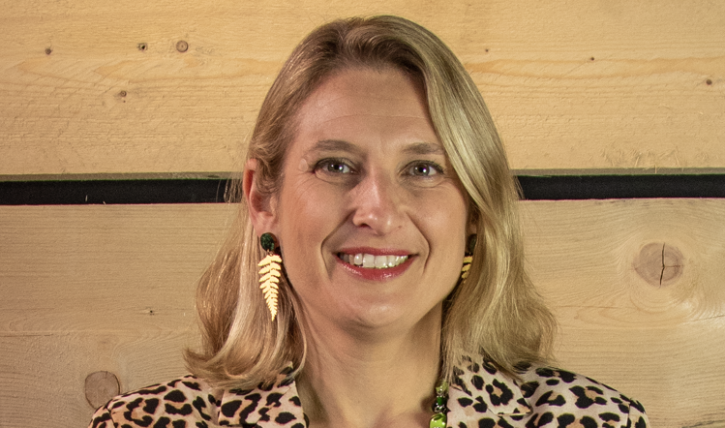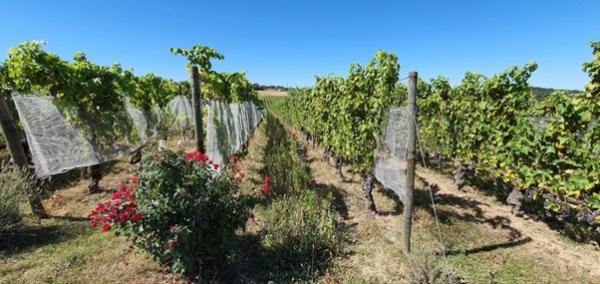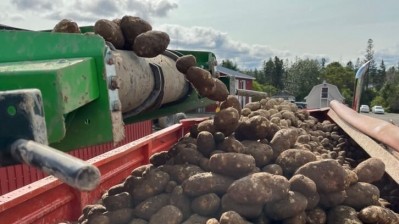Opinion
Cultivating circular design through biodiversity

When I see pictures of Jean-Emmanuel and Sabine’s vineyard in Moissac, France, it isn’t just the usual display of neatly lined identical grape trellises.
Between each row, they have planted linseed and native wildflowers to attract natural predators for the pests that would otherwise eat the neighbouring grapes. Planting in this way – often called intercropping – not only negates the need for pesticides but supports surrounding biodiversity and promotes pollination.
Farming in a more nature-positive way which supports the wider ecosystem can also be applied in the way they approach harvesting. Grapes are picked at full maturity and varieties are selected for flavour, not typically for yield.
Amazonian growing techniques
On the other side of the world, deep in the Amazon rainforest, the Yanomami people use agroforestry knowledge and traditional methods passed down through generations to prepare land in a way which cultivates the growth of unique mixed mushrooms, popular with world famous chefs.
For both this grape-growing couple in the south of France and this indigenous South American tribe, nature-friendly farming methods offer multiple environmental and economic benefits.
Globally, our current linear food system is the main cause of biodiversity loss and a significant contributor to climate change, accounting for a third of greenhouse gas emissions and the erosion of fertile soil.
With no soil and no nature there will be no business. If we are going to continue to feed everyone on our planet, we have to keep the natural environment healthy.
But stories, like the two I’ve highlighted, offer seeds of hope. To protect biodiversity and cut greenhouse gas emissions, action needs to happen in fields, fisheries, and forests across the world.
Creating a circular economy
By transforming the way that products are made and used, food businesses and retailers can play a crucial role in creating a circular economy for food.
Empowering farmers to change the way they manage their land – ensuring regenerative farming techniques continue to grow and thrive for the benefit of us all – requires everyone to be involved; from food designers and new product developers to buyers and retailers.
Both growers and brands are key to transforming the global food system from one that depletes biodiversity, pollutes the surrounding land, air, and water, and generates emissions to one which helps nature thrive and delivers benefits to farmers, businesses, and society.
One way we can embrace a circular economy for food is to create more diversity in our food system.
Currently, just four crops – corn, rice, potatoes, and wheat – form 60% of the world’s calories. A circular economy for food not only combines a more diverse range of crops and varieties but is also based on using upcycled ingredients which reduce crop and product level waste; lower impact ingredients which put less strain on ecosystems, and which actively bring soil back to life, and seeking out ingredients which have been regeneratively produced.
Working together
When food manufacturers and farmers work together to design, produce, and sell products that allow nature to thrive, significant climate and biodiversity benefits can be generated.
Jean-Emmanuel and Sabine sell their grapes to Natoora, a food wholesaler that began life supplying restaurants and now produces its own products and supplies to retailers including Waitrose.
Meanwhile, the Yanomami sell to Brazilian food business Māe Terra, a partnership arranged by Origens Brasil – a group dedicated to finding markets for the produce created by indigenous communities who are the guardians of more than 80% of the world’s biodiversity.
For businesses, learning from these innovative growing methods and techniques presents an exciting opportunity to change the future of food.
The Big Food Redesign Challenge also offers a way to start.
Throwing down the gauntlet
Our challenge invites producers, retailers, start-ups and suppliers to design innovative food products that embrace circular design principles. This gives food businesses an exciting opportunity to discover and develop food products which can be part of the solution, not the problem.
Some progressive food brands have already started to explore the possibilities with 150 organisations already applying to take part in the challenge which will see successful products end up on supermarket shelves in places including Waitrose.
Natoora is a good example of a food brand that is embracing aspects of circular design. As well as sourcing a whole range of regeneratively produced fruit and vegetables, the company pioneered the category of ‘winter tomatoes’ – black tomatoes that ripen when the weather turns colder.
Trading in these diverse varieties not only ensures that they don’t die out and their growers’ livelihoods are protected, but also boosts local biodiversity in Almeria, Spain, where the tomatoes are grown.
Redesigning how we produce food will nourish the earth we all depend on. But it requires action right from the field to the factory.
The Big Food Redesign Challenge, launched by the Ellen MacArthur Foundation in partnership with the Sustainable Food Trust, offers a way to start making a circular economy for food a reality. Entries close on 18 September.

















